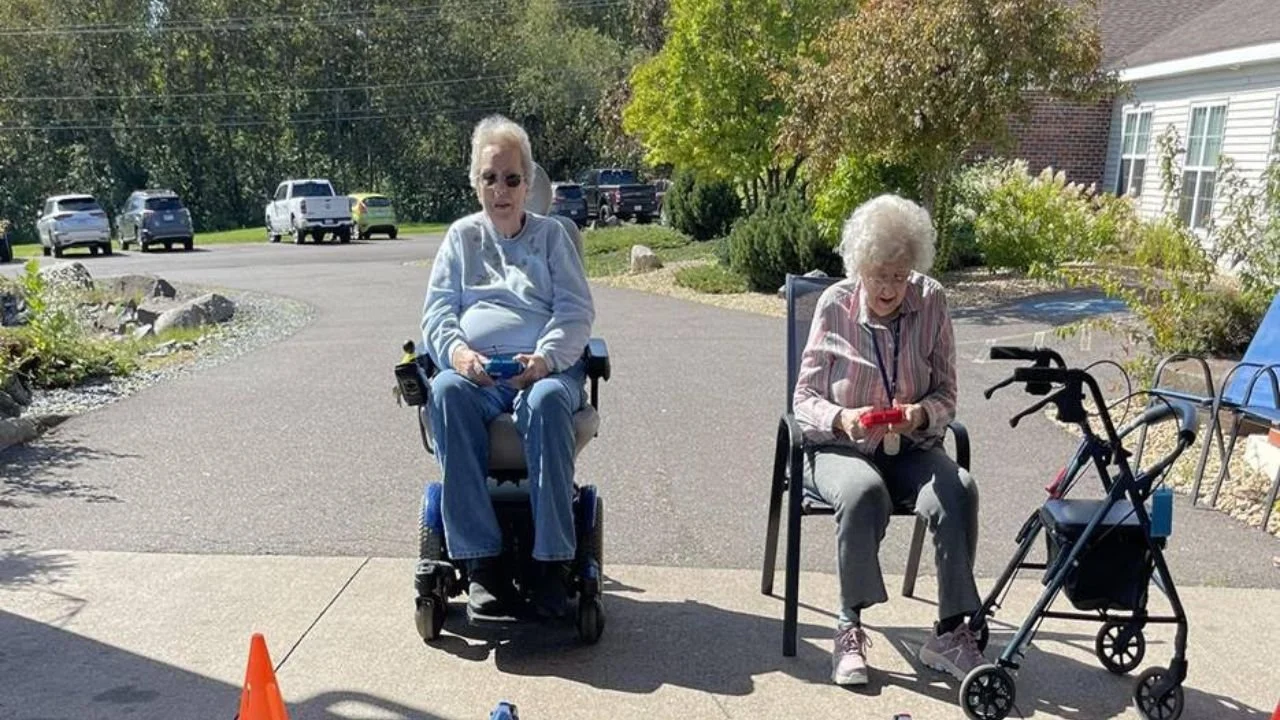What Happens if an Elderly Person Has No One to Care for Them, and How Can Communities Bridge the Gap?
Picture this: An 82-year-old woman falls in her bathroom at 3 AM. Her phone sits charging in the kitchen, just beyond reach. She lives alone. No children nearby. No spouse. No neighbor is checking in regularly. Hours pass before anyone realizes something's wrong.
This isn't a hypothetical scenario. It's happening right now, across America, more often than most of us realize. The question "What happens if an elderly person has no one to care for them?" isn't just a policy concern anymore. It's a growing reality that's reshaping our perspective on aging, community, and human dignity.
The Reality of Aging Alone
About 28% of older Americans live alone, and that number climbs each year. Some chose this independence. Others found themselves isolated through circumstances beyond their control: outliving spouses and friends, children who moved away for work, fractured family relationships, or simply never having close connections to begin with.
What happens if an elderly person has no one to care for them? The answer varies, but the trajectory often follows a predictable pattern. Daily tasks become harder. Small health issues escalate into emergencies.
Cognitive decline often goes unnoticed until it's severe. Malnutrition creeps in, not from poverty necessarily, but from the simple inability to shop or cook regularly.
Medical appointments get missed. Medications aren't taken correctly. Bills pile up unpaid. The home deteriorates because maintenance becomes physically impossible.
And perhaps most damaging, the profound loneliness accelerates both mental and physical decline in ways that medical science is only beginning to fully understand.
What Happens If An Elderly Person has no one to care for them?
When an older adult lacks consistent support, multiple layers of vulnerability can set in:
Health issues escalate faster. Without help for medications or doctor visits, chronic conditions can worsen.
Social isolation becomes severe. Loneliness is linked with depression, cognitive decline, and higher mortality.
Daily living tasks get harder. Basic things like grocery shopping, cooking, cleaning, or even hygiene can become overwhelming.
Safety risks increase. Falls, wandering, medication errors or accidents are more likely when nobody is checking in.
Financial and legal matters may be neglected. Bills go unpaid, vital documents are lost, and fraud can target the vulnerable.
Independence gets threatened. Without support, moving to institutional care may become the only safe option when it could have been avoided or delayed.
In short, if an elderly person has no one to care for them, their quality of life and well-being face serious threats from multiple fronts.
Discover a place where no one ages alone; Keystone Bluffs Assisted Living offers 24/7 care, daily activities, and a true sense of home for Duluth seniors.
Where Safety Nets Exist (And Where They Don't)
America has several systems designed to catch vulnerable seniors, though they're far from comprehensive.
Adult Protective Services operates in every state, investigating reports of elder abuse, neglect, and exploitation. When someone reports a senior living in dangerous conditions or unable to care for themselves, APS can intervene. They assess the situation, connect people with resources, and in extreme cases, pursue guardianship or placement in care facilities.
Medicare and Medicaid differ dramatically in their long-term care coverage. Medicare does not pay for long-term care at all, covering only short-term skilled nursing care after a hospital stay for up to 100 days. Medicaid, by contrast, is the nation's largest payer for long-term services and supports, covering two-thirds of all home care spending. However, there's a structural challenge: federal law requires states to cover nursing home care under Medicaid but makes most home and community-based services optional.
Area Agencies on Aging coordinate services in local communities. They arrange meal delivery, transportation to appointments, home modifications for safety, and connections to volunteer programs. Yet they're chronically underfunded and can't serve everyone who needs help.
Social workers in hospitals play a crucial role. When an elderly person arrives at an emergency room with no support system, discharge planners scramble to create one. They connect patients with home health agencies, arrange temporary stays in rehabilitation facilities, and search for any family members who might help.
But here's the harsh truth: these safety nets catch people only after they've already fallen. Someone has to notice the problem first. A concerned neighbor. A mail carrier who sees uncollected mail.
A banker who notices unusual account activity. A landlord responding to complaints. Without eyes on the situation, seniors can deteriorate for months or years before any system intervenes.
How Communities Are Stepping Up to Bridge the Gap?
Some communities aren't waiting for crisis intervention. They're building proactive systems that prevent isolation in the first place.
Village movements have emerged in hundreds of neighborhoods nationwide. Members pay modest fees to access a network of vetted service providers and volunteers who help with everything from transportation to home repairs to social activities.
These villages create the support network that extended families once provided naturally.
Naturally Occurring Retirement Communities represent another model. When apartment buildings or neighborhoods have high concentrations of older residents, property managers and social service agencies collaborate to bring services directly to residents.
A social worker might maintain an office in the building. Group activities happen in common spaces. Healthcare providers make regular visits.
Faith communities have always played this role informally, but some are now structuring their outreach. Organized visitation programs, meal trains, transportation ministries, and phone check-in systems ensure regular human contact for isolated members.
Technology is bridging gaps, too. Telehealth reduces the need for transportation to appointments. Medication management apps send reminders and alerts. Smart home sensors detect falls or unusual patterns that might indicate problems.
Video calling keeps distant family members more connected, though it can't replace physical presence when help is genuinely needed.
Some municipalities have created "gatekeeper programs" that train utility workers, postal carriers, bank tellers, and other professionals who regularly interact with older adults to recognize warning signs and know how to report concerns appropriately.
When the Question Becomes Personal
What happens if an elderly person has no one to care for them? For many families, this question shifts from abstract to urgent when they realize it describes someone they love.
Adult children living states away face agonizing decisions. Moving an elderly parent closer disrupts the parent's remaining connections and familiar environment. Moving yourself closer to the parent disrupts your career and family.
Hiring private care coordinators can cost thousands monthly. Convincing a fiercely independent parent to accept help often proves harder than finding the help itself.
Ready to start the conversation? Contact us today. Our caring team is here to guide you and your loved one toward a safe, fulfilling future at Keystone Bluffs.
Bridging the Care Gap with Keystone Bluffs
When families can’t be there, Keystone Bluffs steps in with care that feels like home. We understand what happens if an elderly person has no one to care for them, and that’s why our community is built around connection, safety, and trust.
From 24/7 assistance to engaging programs that keep residents active and socially connected, we make sure no one is ever left without support. Check out how Keystone Bluffs helps seniors live confidently, surrounded by people who truly care. Schedule a tour today and see the difference a compassionate community can make.


